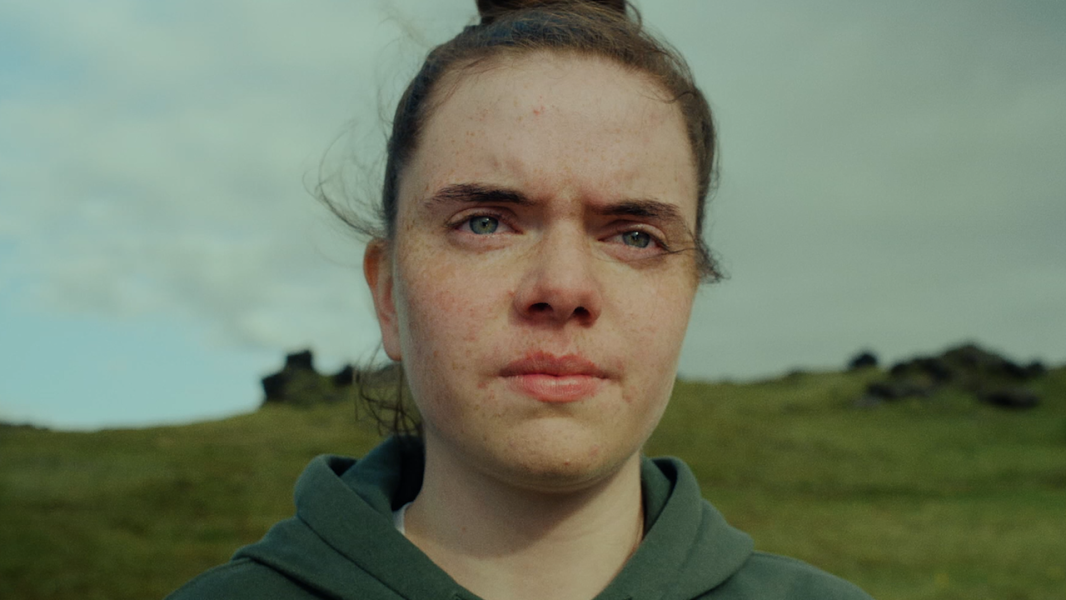
Save this storySave this storySave this storySave this story
A girl is peering out of her foggy car window, surveying the dark, quiet roads that signal a town that has gone to sleep. Outside, the only colors that appear are from hazy yellow and orange street lamps. She is searching for baby puffins, or “pufflings,” in the night sky, as they drop from cliffs into the town. The teen-ager looks around for any flurries of white—as the birds’ bright stomachs can be spotted against the dark. During their peak migration time, the bird species outnumbers the human population on the craggy Icelandic archipelago of Vestmannaeyjar. She is one of the young people on Vestmannaeyjar who, during a couple of weeks in the summer, carry baby puffins that are still getting used to flying, from land to sea, where they belong.
The tradition has a long history. When electricity was introduced to Vestmannaeyjar, puffins, who navigate using moonlight, became confused and followed the artificial lights inland rather than out to sea. Jessica Bishopp’s meditative short documentary, “Puffling,” which was produced by Alice Hughes and Gannesh Rajah, shows the increasingly vital rescues against a backdrop of local environmental concerns, such as losses in biodiversity.
The New Yorker Documentary
View the latest or submit your own film.

And the fledglings aren’t the only ones who benefit from the rescue. The short film immerses us in the lives of two teen-age girls, Selma and Birta, and follows their journey as they find pufflings and reflect on their connection to the island they call home. Vestmannaeyjar’s young people search for lost pufflings that have fallen into streets, yards, and neighborhoods and transport them to the water. The relationship between the girls and the pufflings is “intrinsic and innate, which is why it interested me,” Bishopp told me. “They’re so passionate about saving the birds because they fear for the future, and they want to preserve and conserve what is currently there.”
The film includes several stretches of footage of Birta and Selma as they drive around with their friends during the darkest hours of the night, typically between eleven and three in the morning. The car rides are filled with anticipation, as the girls and their friends watchfully survey their external surroundings, looking outside, even when they are talking to each other. In many filmic portrayals of teens, driving in the middle of the night signifies impending mischief, but these scenes subvert the expectation of rebellion and replace it with a sense of duty: to find and collect pufflings in cardboard boxes. While driving, the teens are quiet; their stillness is often only punctured by someone exclaiming, “Puffling!” as the car screeches to a stop, and the group rushes out to investigate. “I have no idea what would happen if we did not rescue them,” Selma says, over the rhythm of windshield wipers. “But I think they would just die.”
Interspersed with the puffling search are brief moments of the quotidian: we see Selma talking to her friends about acrylic nails and also braiding her younger sister’s hair. These scenes illustrate how the teens’ environmental action is only a part of a larger routine of caretaking, revealing a world in which environmental protection is both normal and necessary. “I think it’s important that we tell alternative stories of girlhood, and it’s not led by trauma or romance,” Bishopp said. The girls show themselves to be responsible stewards. They are also in the midst of their own coming of age, and they’re aware of the parallel between their own experiences and those of the birds, who are separating from their parents.
Bishopp spent extensive time with Birta, Selma, and their families away from the camera, and wanted to make a film that speaks to the power of climate action on a personal, intimate scale. “We’ve seen a lot of films that are from an expert-led or activist perspective, and people aren’t necessarily seeing how it relates to them,” Bishopp said. “[Birta and Selma] are not activists or experts. They’re young people—they have their own dreams and hopes that don’t necessarily relate directly to the environment. It shows us how interconnected we are and how we’re part of wildlife.”
Sourse: newyorker.com